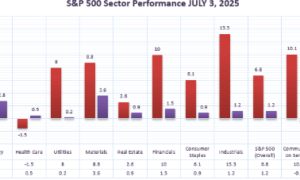Virtual medical assistants, or VMAs, are changing how healthcare facilities function. These digital aids that mimic human capabilities simplify duties, enhance patient care, and optimize operational efficiency. This detailed guide will help you integrate VMAs into your healthcare setting.
Healthcare institutions are under pressure to deliver top-notch care while balancing escalating expenses and intricate administrative responsibilities. Incorporating Virtual Medical Assistants (VMAs) offers a solution to these challenges. This article provides a comprehensive manual on introducing VMAs into your healthcare practices.
There are numerous benefits to hiring a virtual healthcare assistant. Here are the top reasons why you should hire and why you need to understand its importance:
1) Understanding Virtual Medical Assistants
A Virtual Medical Assistant is a tool crafted to handle administrative and clinical tasks from afar. From managing appointments to data entry, prescription refills, and billing tasks, these assistants enable healthcare professionals to concentrate on well-being.
2) Advantages of Virtual Medical Assistants
- Enhanced Efficiency
By automating appointment scheduling and patient follow-ups, VMAs significantly reduce time spent on duties. This automation frees up staff for tasks, boosting workflow efficiency.
- Cost Efficiency
With reduced personnel dependence, VMAs can lead to substantial cost savings in healthcare operations. They also help reduce the chances of human mistakes when entering data and processing billing, which can lead to cost savings.
- Improved Patient Experience
Virtual Medical Assistants (VMAs) ensure that appointments, prescriptions, and patient inquiries are handled promptly and accurately, enhancing the patient experience. The smooth communication and efficient processes contribute to increased satisfaction.
3) Assessing Your Facility Requirements
Identifying Tasks Before implementing a VMA, it is essential to identify the tasks you intend to carry out. Whether it involves managing appointment schedules, sending reminders, or handling paperwork, understanding your needs will aid in selecting the appropriate VMA.
- Evaluating Current Resources
Evaluate your resources to pinpoint any gaps VMAs could fill. Assess the capabilities of your existing staff and technology to identify areas where a VMA could boost efficiency.
4) Choosing the VMA Solutions Types of VMAs
There are types of VMAs designed for specific purposes. Some focus on billing and coding tasks, while others prioritize communication. Select the type that aligns best with your facility’s requirements.
5) Key Features to Keep in Mind
When choosing a VMA solution, consider aspects like ease of use, compatibility with systems, data security measures, and scalability potential. Ensure that the virtual medical assistant (VMA) you choose can connect smoothly with your software and workflow.
6) Getting Ready for Integration
- Securing Data & Compliance
When integrating VMAs, it’s essential to prioritize data security and compliance with healthcare regulations. Look for solutions with encryption, secure data storage, and adherence to HIPAA and other relevant rules.
- Staff Training
Successful integration hinges on staff training. Educate your team on how to use the VMA, emphasizing its features, functions, and best practices. Training should be ongoing to adapt to system updates and new functionalities.
7) Introduction Process
Step by Step Integration:
- Planning: Create a plan that outlines the integration process, timelines, and responsible personnel.
- Testing: Carry out pilot testing to identify any issues and gather feedback.
- Deployment: Introduce the VMA in stages to ensure a transition and promptly address any challenges.
- Assessment: Continuously assess the VMA’s performance. Make adjustments.
- Monitoring and Feedback: Monitor the VMA’s performance regularly and collect feedback from staff and patients. Use this information to continuously improve and ensure the VMA meets your facility’s needs effectively.
8) Post-Implementation Strategies
- Ongoing Support and Training
Post-implementation support is vital to maintain the efficiency of VMAs. Provide ongoing training sessions to keep the staff updated about new features and functionalities. Regular support will help promptly address any issues that arise.
- Measuring Success
Evaluate the success of the VMA integration by measuring key performance indicators such as task completion rate, time savings, cost reductions, and patient satisfaction. Regular assessments will help you understand the impact and make informed decisions for future improvements.
9) Case Studies and Success Stories
- Case Study 1: A Large Hospital Network
A significant hospital network successfully integrated VMAs to handle patient scheduling and reminders. The result was a 30% increase in appointment adherence and a substantial reduction in no-shows. Staff reported higher efficiency, and patients appreciated the timely reminders.
- Case Study 2: A Small Clinic
A small clinic implemented a VMA to manage billing and insurance claims. This led to a 20% increase in claim acceptance rates and reduced administrative workload by 40%, allowing staff to devote more time to patient care. Patients also reported a smoother billing process.
Integrating Virtual Medical Assistants can bring numerous benefits to healthcare facilities, including increased efficiency, cost savings, and improved patient experience. You can seamlessly incorporate VMAs into your healthcare operations by assessing your facility’s needs, choosing the right VMA solution, preparing for integration, and implementing post-implementation strategies. Continuous monitoring and evaluation will ensure the VMA aligns with your facility’s goals and delivers positive outcomes for both staff and patients.
Conclusion
Integrating Virtual Medical Assistants into your healthcare facility is a transformative step toward enhancing efficiency and patient care. By carefully assessing your needs, choosing the right solutions, and implementing them effectively, you can ensure a smooth transition and reap the numerous benefits of VMAs. Your facility can stay ahead in the competitive healthcare landscape with ongoing support and continuous evaluation. Integrating VMAs might seem daunting, but with a structured approach, it can be a seamless and rewarding process. Start today and transform your healthcare operations for the better. So, if you want to improve efficiency and patient experience while reducing costs, integrating a VMA into your facility is the way to go. With ongoing technological advancements, virtual medical assistants will become more sophisticated and essential for healthcare facilities. Don’t get left behind – start exploring VMA solutions now!
Doctor website traffic growth: Increase your doctor website traffic with expert SEO services from SEOechelon.com. Grow your patient base and online presence!



































